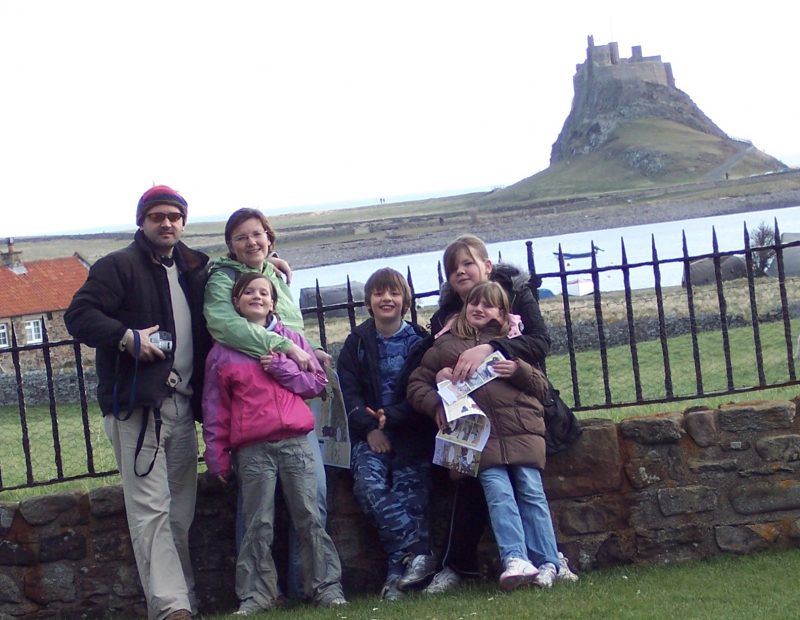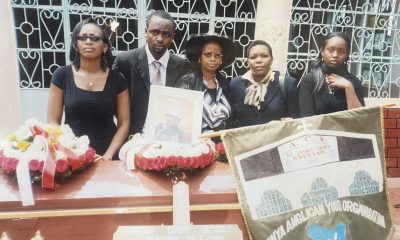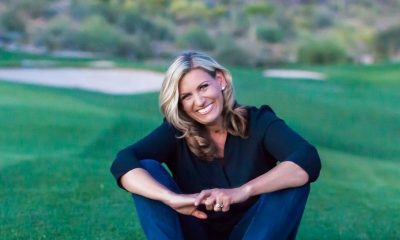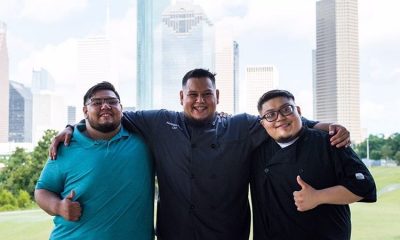By Mark Oborn
Is it possible for bereavement to be a positive experience?I’m guessing as you read this, the immediate answer is “Absolutely not, bereavement and the resultant grief is always painful,” and I’m in 100% agreement with you.And yet, at the same time, in the 11 painful years since my beautiful childhood sweetheart wife died suddenly aged 42, leaving me with four teenage children and a granddaughter, I’ve come to a place of peace and acceptance. I’m truly happy with my life and have used this dreadful experience to learn, grow and enjoy my life like never before.Join me on a little journey as I explain, and as you do, I wonder how much you will learn as you read this?Here’s what I’ve learnt.There are steps we need to go through in a journey to peace and acceptance.Step one, we need to turn up.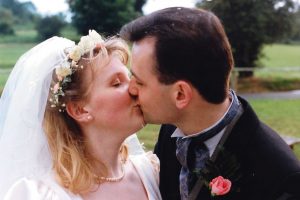 Turning up means being present. It means being prepared to feel emotions we need to feel. When we hide emotions away, they have a tendency to eat at us, we know they’re there, just waiting to get out. It might seem easier to keep emotions repressed, and sometimes it’s the right thing to do, but what I’ve found is that if I truly feel the emotions, I can begin to learn from them. When grief hits me I simply say, “Well hello again, here you are, what do I need to learn today?” When I take a learning it gives the grief a positive meaning, and suddenly it becomes part of the way we can learn and grow as humans.Turning up means spending time to connect to the world around us, to live every moment. Just like the tiny splash of a raindrop as it hits the water, its existence ends just as it comes into being — when we really feel what’s going on around us we can feel truly alive. And that is a real blessing.Step two, we need to acknowledge and accept that we have emotions. After we’ve decided to turn up and feel what we need to feel, the next step is about acceptance of those emotions.It doesn’t mean they go away, it just means we stop the fight.When we fight with our emotions, wishing they would go away, wanting them to be something different, being angry that what happened has led to these emotions, then we add another layer of pain. When we give up the fight and surrender we can begin to feel the emotions, this may be more painful in the short term, but as we learn from each emotion we feel, we start to recognise that it’s just an emotion. There’s no need to create a big story. We just have emotion, feel what we need to feel and let it pass. Another emotion will be along soon. And then another, and another, and another. No judgment, no stories, just an emotion and that we have learnt something. And then we let it go.After 11 years I still feel the most intense pain. But what I don’t do now is fight it. I’m happy to sit with the pain, learn from it and then thank it for teaching me something new.Step three is to acknowledge and accept emotional conflict. It can often seem conflicting to enjoy life now and have the grief from what went before. It can sometimes feel wrong to feel happy. I’ve given up trying to reconcile these conflicting emotions. I feel so desperately sad at the loss of my beautiful wife, at the same time I feel so wonderfully happy with the life I have now. Yes, these emotions conflict, but there’s nothing to be gained from trying to reconcile them. They just are. The conflict just is. I’m happy to hold the grief and pain from my past in one hand, and the joy and serenity of my current life in the other hand. And as I look at both hands, I’m able to communicate with both of those feelings in each hand. I can look at those emotions, sitting on each of my hands, and I can learn and grow from both.Step four has been a journey to discover the unique “I”, instead of “we.” What do I want in life? What do I want to do? My beautiful wife and I had been together since we were 16 and I didn’t know what adult life was like on my own. I didn’t know what adult life looked like, what films I liked, what food I liked or what I liked doing in my spare time. It was always “us,” always “we.”
Turning up means being present. It means being prepared to feel emotions we need to feel. When we hide emotions away, they have a tendency to eat at us, we know they’re there, just waiting to get out. It might seem easier to keep emotions repressed, and sometimes it’s the right thing to do, but what I’ve found is that if I truly feel the emotions, I can begin to learn from them. When grief hits me I simply say, “Well hello again, here you are, what do I need to learn today?” When I take a learning it gives the grief a positive meaning, and suddenly it becomes part of the way we can learn and grow as humans.Turning up means spending time to connect to the world around us, to live every moment. Just like the tiny splash of a raindrop as it hits the water, its existence ends just as it comes into being — when we really feel what’s going on around us we can feel truly alive. And that is a real blessing.Step two, we need to acknowledge and accept that we have emotions. After we’ve decided to turn up and feel what we need to feel, the next step is about acceptance of those emotions.It doesn’t mean they go away, it just means we stop the fight.When we fight with our emotions, wishing they would go away, wanting them to be something different, being angry that what happened has led to these emotions, then we add another layer of pain. When we give up the fight and surrender we can begin to feel the emotions, this may be more painful in the short term, but as we learn from each emotion we feel, we start to recognise that it’s just an emotion. There’s no need to create a big story. We just have emotion, feel what we need to feel and let it pass. Another emotion will be along soon. And then another, and another, and another. No judgment, no stories, just an emotion and that we have learnt something. And then we let it go.After 11 years I still feel the most intense pain. But what I don’t do now is fight it. I’m happy to sit with the pain, learn from it and then thank it for teaching me something new.Step three is to acknowledge and accept emotional conflict. It can often seem conflicting to enjoy life now and have the grief from what went before. It can sometimes feel wrong to feel happy. I’ve given up trying to reconcile these conflicting emotions. I feel so desperately sad at the loss of my beautiful wife, at the same time I feel so wonderfully happy with the life I have now. Yes, these emotions conflict, but there’s nothing to be gained from trying to reconcile them. They just are. The conflict just is. I’m happy to hold the grief and pain from my past in one hand, and the joy and serenity of my current life in the other hand. And as I look at both hands, I’m able to communicate with both of those feelings in each hand. I can look at those emotions, sitting on each of my hands, and I can learn and grow from both.Step four has been a journey to discover the unique “I”, instead of “we.” What do I want in life? What do I want to do? My beautiful wife and I had been together since we were 16 and I didn’t know what adult life was like on my own. I didn’t know what adult life looked like, what films I liked, what food I liked or what I liked doing in my spare time. It was always “us,” always “we.” 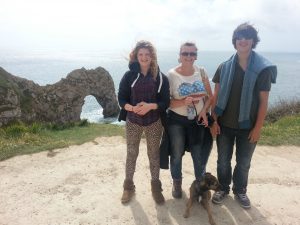 Once I decided to turn up and connect with the world around me, acknowledging that I had emotions and stopping the fight with emotional conflict, I began to discover what “I” really wanted. And again, there may be some conflict here as it is not what I wanted in life, I always wanted there to be a WE. But there isn’t. She’s gone, and in truth, when I connect with “I,” it makes me a more whole person, better able to engage in relationships with other people, not wanting to take anything from them in order to fulfill something in my own life, which leaves me in a stronger position to give to other people, making better relationships overall. I wish I had learnt this sooner in life!Step five has been about me thinking about the future. I recognise and acknowledge that the future is not how we had planned it. It’s not how I wanted it. And it’s okay to have 2 differing emotions. But because I’m accepting of the emotional conflict, I’m also allowed to have some joy and excitement about what my life could possibly have in store, and what “I” actually want. And because I’ve accepted emotional conflict, I can have this excitement at the same time as not wanting a future without my wonderful wife. The truth of the matter is that she is gone and I have to face life without her. I hold this in one hand. On the other hand, I recognise and accept “I” as a unique individual and I am now excited about what I can do in my life that I might not otherwise have done.A big thing for me was learning to ride a motorbike as this was something that we had agreed I wouldn’t do. It’s been a big heart of my therapy to discover the true “I” in my life and think about what I can do in the future.And finally, I discovered that all we actually have is NOW. This fleeting moment, as the splash of a raindrop disappears just as it comes into being, we don’t really know what’s going to happen in the future, and the past has already happened, so all we have is right NOW. This single moment, which has gone even as we say the word NOW. And as I live life truly connected to now, I’m able to experience a more vivid, bright and wonderful existence, deeply affected by the beauty of the world around me and enjoying every moment. And that is a real blessing.I believe we all have a choice.We can be a victim to our life and let life happen to us, always living in the past, and always wanting things to be different. The one thing that connects us all is suffering!Or we can acknowledge that we have experienced something truly awful, we can decide to learn from that experience, hold conflicting emotions, stop fighting the emotions, live life in the now, and enjoy and experience all that this glorious world has to offer us.I choose the latter, which do you choose?
Once I decided to turn up and connect with the world around me, acknowledging that I had emotions and stopping the fight with emotional conflict, I began to discover what “I” really wanted. And again, there may be some conflict here as it is not what I wanted in life, I always wanted there to be a WE. But there isn’t. She’s gone, and in truth, when I connect with “I,” it makes me a more whole person, better able to engage in relationships with other people, not wanting to take anything from them in order to fulfill something in my own life, which leaves me in a stronger position to give to other people, making better relationships overall. I wish I had learnt this sooner in life!Step five has been about me thinking about the future. I recognise and acknowledge that the future is not how we had planned it. It’s not how I wanted it. And it’s okay to have 2 differing emotions. But because I’m accepting of the emotional conflict, I’m also allowed to have some joy and excitement about what my life could possibly have in store, and what “I” actually want. And because I’ve accepted emotional conflict, I can have this excitement at the same time as not wanting a future without my wonderful wife. The truth of the matter is that she is gone and I have to face life without her. I hold this in one hand. On the other hand, I recognise and accept “I” as a unique individual and I am now excited about what I can do in my life that I might not otherwise have done.A big thing for me was learning to ride a motorbike as this was something that we had agreed I wouldn’t do. It’s been a big heart of my therapy to discover the true “I” in my life and think about what I can do in the future.And finally, I discovered that all we actually have is NOW. This fleeting moment, as the splash of a raindrop disappears just as it comes into being, we don’t really know what’s going to happen in the future, and the past has already happened, so all we have is right NOW. This single moment, which has gone even as we say the word NOW. And as I live life truly connected to now, I’m able to experience a more vivid, bright and wonderful existence, deeply affected by the beauty of the world around me and enjoying every moment. And that is a real blessing.I believe we all have a choice.We can be a victim to our life and let life happen to us, always living in the past, and always wanting things to be different. The one thing that connects us all is suffering!Or we can acknowledge that we have experienced something truly awful, we can decide to learn from that experience, hold conflicting emotions, stop fighting the emotions, live life in the now, and enjoy and experience all that this glorious world has to offer us.I choose the latter, which do you choose?
For more information about Mark, you can check out his website.
Support us by driving awareness!
Subscribe to our YouTube channel at YouTube.com/GrapGrief.
Follow us on Facebook at Facebook.com/GrapGrief and on Instagram at Instagram.com/GrapGrief.




